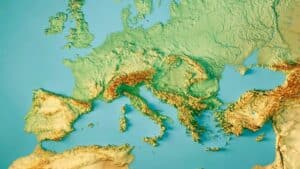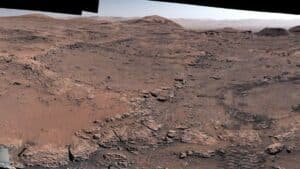Beneath the African continent, a remarkable geological phenomenon is quietly unfolding. Scientists have discovered rhythmic surges of molten mantle rock rising from deep within Earth’s interior. This pulsating activity isn’t just a curiosity—it’s gradually tearing Africa apart and may eventually create a new ocean basin. This discovery has profound implications for our understanding of continental breakup and tectonic processes.
The pulsating heart beneath African soil
Recent research led by Earth scientists reveals that the Afar region in Ethiopia sits above a dynamic plume of hot mantle material. This isn’t a static structure but rather a pulsating geological force that behaves remarkably like a beating heart. These pulses carry distinct chemical signatures that scientists can identify in volcanic rocks collected from the region.
“The mantle beneath Afar is neither uniform nor stationary,” explains Dr. Emma Watts, who led the research. “It pulses rhythmically, and these ascending pulses of partially molten mantle are channeled by the rifting plates above.” This interaction between deep Earth processes and surface tectonics provides crucial insights into how our planet’s interior and exterior systems communicate.
The international research team collected over 130 volcanic rock samples across the Afar region and Main Ethiopian Rift. Through advanced statistical modeling, they identified chemical patterns that repeat across the rift system—essentially geological barcodes that reveal the plume’s behavior.
In 2019, Iceland Approved the 4-Day Workweek: Nearly 6 Years Later, All Forecasts by Generation Z Have Come True
At 94, He’s One of Apple’s Biggest Shareholders, and Doctors Can’t Explain How He’s Still Alive-Coca-Cola and McDonald’s Are Part of His Daily Routine
Where three rifts converge: a geological laboratory
The Afar region represents a rare geological setting where three major tectonic rifts converge:
- The Main Ethiopian Rift
- The Red Sea Rift
- The Gulf of Aden Rift
This unique convergence creates a natural laboratory for studying continental breakup. As tectonic plates pull apart at these rift zones, they stretch and thin over millions of years—similar to soft plasticine—until they eventually rupture. This rupturing process marks the birth of new ocean basins.
Professor Tom Gernon, co-author of the study, notes that “the chemical striping suggests the plume is pulsing, like a heartbeat. These pulses appear to behave differently depending on the thickness of the plate and how fast it’s pulling apart.” In faster-spreading rifts like the Red Sea, the pulses travel more efficiently, resembling “a pulse through a narrow artery.”
Tectonic plates and mantle dynamics: a two-way relationship
One of the most significant findings from this research is how the mantle plume responds to the tectonic plate above it. Rather than simply forcing its way upward indiscriminately, the mantle upwelling adapts to plate conditions.
| Rift Zone | Plate Characteristics | Plume Behavior |
|---|---|---|
| Red Sea Rift | Faster-spreading, thinner | More efficient pulse transmission |
| Main Ethiopian Rift | Moderate spreading | Intermediate pulse patterns |
| Gulf of Aden Rift | Complex spreading pattern | Variable pulse behavior |
“We have found that the evolution of deep mantle upwellings is intimately tied to the motion of the plates above,” explains Dr. Derek Keir, Associate Professor in Earth Science. “This has profound implications for how we interpret surface volcanism, earthquake activity, and the process of continental breakup.”
The research demonstrates that deep mantle upwellings can flow beneath tectonic plates and focus volcanic activity where the plate is thinnest. This targeted approach helps explain why volcanic activity often concentrates along rift zones rather than spreading evenly.
It races through the universe at 300,000 km/s - and never runs out of energy
Beneath your feet: an ancient forgotten continent resurfaces in Europe
Future implications of Africa’s geological transformation
The ongoing geological processes beneath Africa represent a rare opportunity to witness continental breakup in action. While this process occurs over millions of years—far beyond human timescales—it provides valuable insights into how Earth’s continents have formed and separated throughout geological history.
This research also highlights the importance of collaborative, multi-disciplinary approaches to Earth science. As Dr. Watts notes, “Working with researchers with different expertise across institutions is essential to unravelling the processes that happen under Earth’s surface. Without using a variety of techniques, it is hard to see the full picture.”
As research continues, scientists hope to better understand how and at what rate mantle flow occurs beneath tectonic plates. These insights may help predict future volcanic and seismic activity in the region, while also deepening our understanding of the fundamental processes that shape our planet’s surface.







